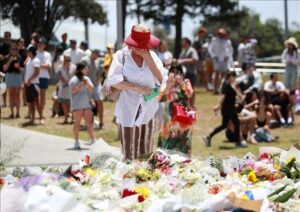Australia Secures Tariff Advantage in U.S. Market Amid Broader Import Duty Hikes

Adelaide, The Gulf Observer: Australian exporters stand to gain a competitive edge in the United States market following U.S. President Donald Trump’s decision to maintain a minimum tariff rate of 10% for Australian goods, according to Australian Trade Minister Don Farrell.
The move comes as Washington prepares to impose significantly higher import duties—ranging from 10% to 41%—on goods from 69 trading partners starting next week. Affected countries include Canada (35%), Brazil (50%), and New Zealand (15%). By contrast, Australia retains a baseline rate, positioning its exports more favorably in the American market.
“What this decision means, in conjunction with all of the other changes to other countries, is that Australian products are now more competitive into the American market,” Minister Farrell told reporters in Adelaide. “We will assist all of our exporters in ensuring we take advantage of this situation and increase the volume of exports.”
The tariff reprieve offers a diplomatic win for Prime Minister Anthony Albanese, whose government had faced criticism from the opposition for not securing a personal meeting with President Trump. Farrell, however, emphasized that Australia’s strategic and measured diplomacy played a crucial role in achieving the outcome.
“This is a vindication for the Albanese government and particularly the Prime Minister, in the cool and calm way we have conducted diplomacy with the United States,” Farrell said.
The decision follows Australia’s easing of restrictions on beef imports from the U.S. last week—an action Albanese noted had been under consideration for some time and was not directly tied to current trade negotiations.
Meanwhile, New Zealand expressed concern over its new 15% tariff classification. Trade Minister Todd McClay said he was seeking an urgent call with the U.S. Trade Representative to express New Zealand’s opposition to the move.
“This increase risks harming exporters and consumers of both countries,” McClay said in a statement, noting that U.S. exporters currently face an average tariff of just 0.8% when trading with New Zealand. With annual exports to the U.S. totaling around NZ$9 billion (US$5.29 billion), he warned the impact on New Zealand businesses would be “considerable.”
As global trade dynamics shift under the new U.S. tariff structure, Australia appears poised to strengthen its foothold in one of its key export markets.


